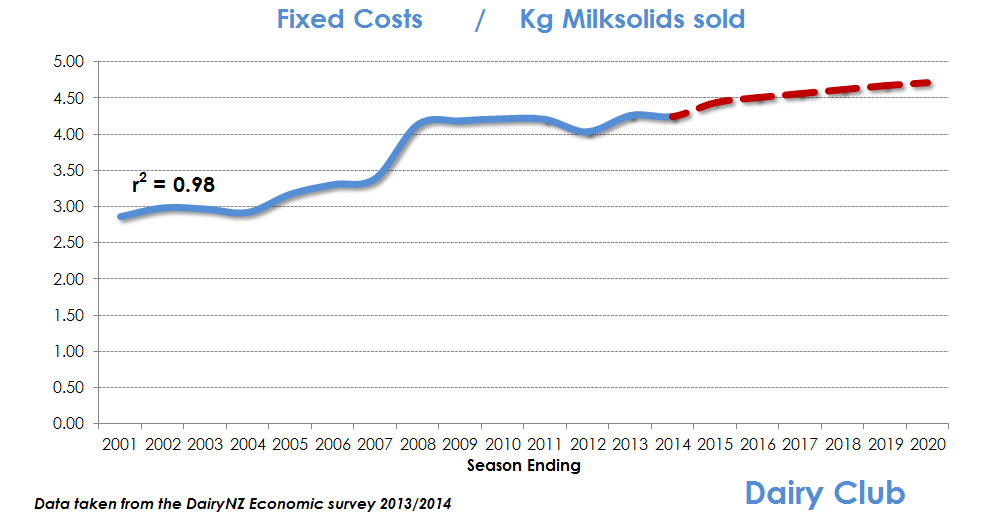There’s lots of commentary at present about cutting costs in the dairy industry. Most of the costs to be cut being Variable Cost items, yet fundamentally at a $3.85 payout it is the Fixed Costs that represent the majority of the problem, not the Variables. The solution to the ‘pollution’ of Fixed Costs would be to dilute them.
The chart takes the DairyNZ Economic Survey data and displays the average Fixed Costs per Kg of Milk Solids sold within the farm business.
These Fixed Costs include Labour, Machinery, Power, R&M, Office Costs, Bank Costs and Interest.
What can be seen from this data is that the Fixed Costs currently account for $4.25 of the costs of production on the average farm.
These Fixed Costs are currently diluted by 151,455kgMS on average to give the $4.25.
 If Production were to drop then these costs per milk solid would rise. This table looks at the effects of some options of changing milk output and cow numbers and the availability of cash for Variable Costs.
If Production were to drop then these costs per milk solid would rise. This table looks at the effects of some options of changing milk output and cow numbers and the availability of cash for Variable Costs.
With Tracker showing that the average herd analyzed could achieve another 27% more milk from peak, there is a good opportunity to dilute these costs down by looking at production post peak.
Most of that production could be achieved from more days in milk and better digestion.
If we are to hit a drought again this season we need to ensure that we have made provision by making silage early on.
There is also a Fixed Costs of maintaining a cow every day and whilst dry. A recent example posted by a farm business showed their cost to be $329 per head over the 9 week dry period. This cost is equivalent to the income from 85 KgMS. It also equates to a cost per cow of $5.22 per day, which is far more than a typical farm spends on a milking cow ration. Dilute down the maintenance cost and the cost of the dry period by getting the production and income up per cow.
Know what your costs are and review the effects of dilution on the economics of your business.

